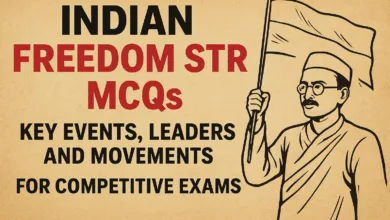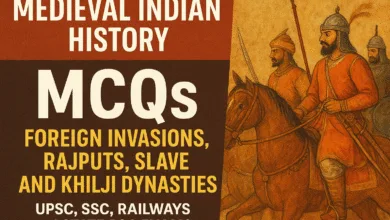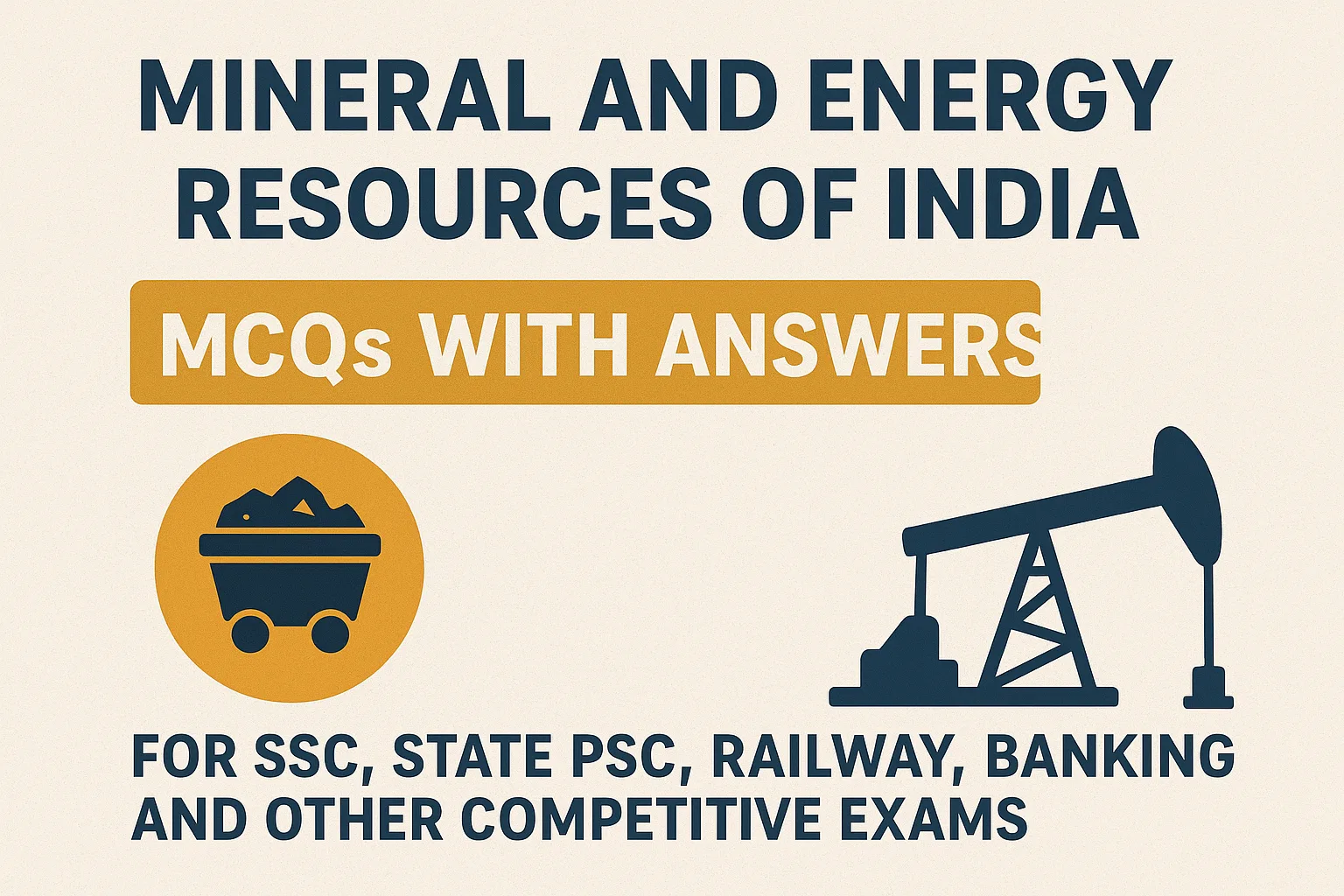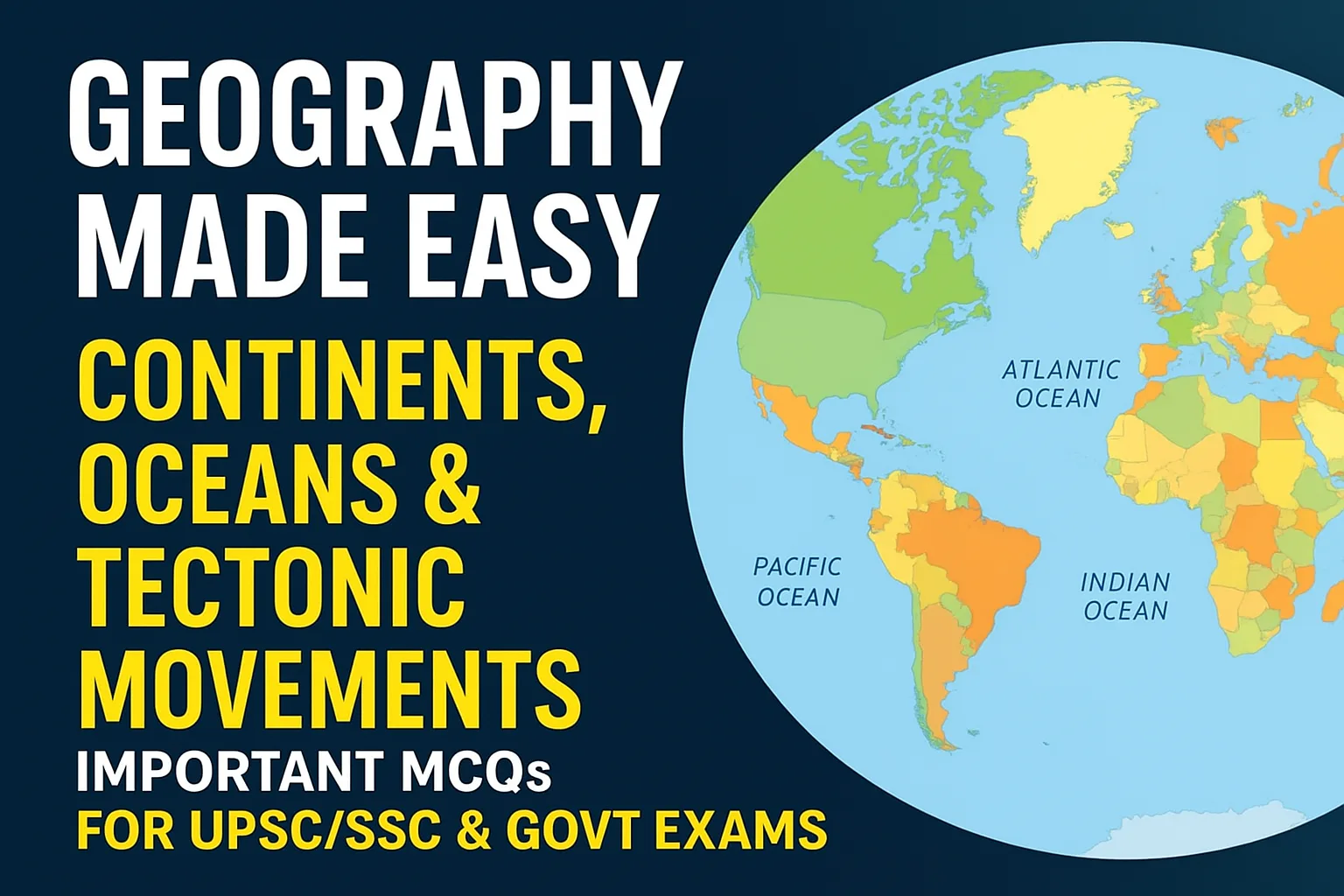Indian Constitution & Freedom Movement: MCQs on Books, Newspapers for UPSC, SSC & State Exams
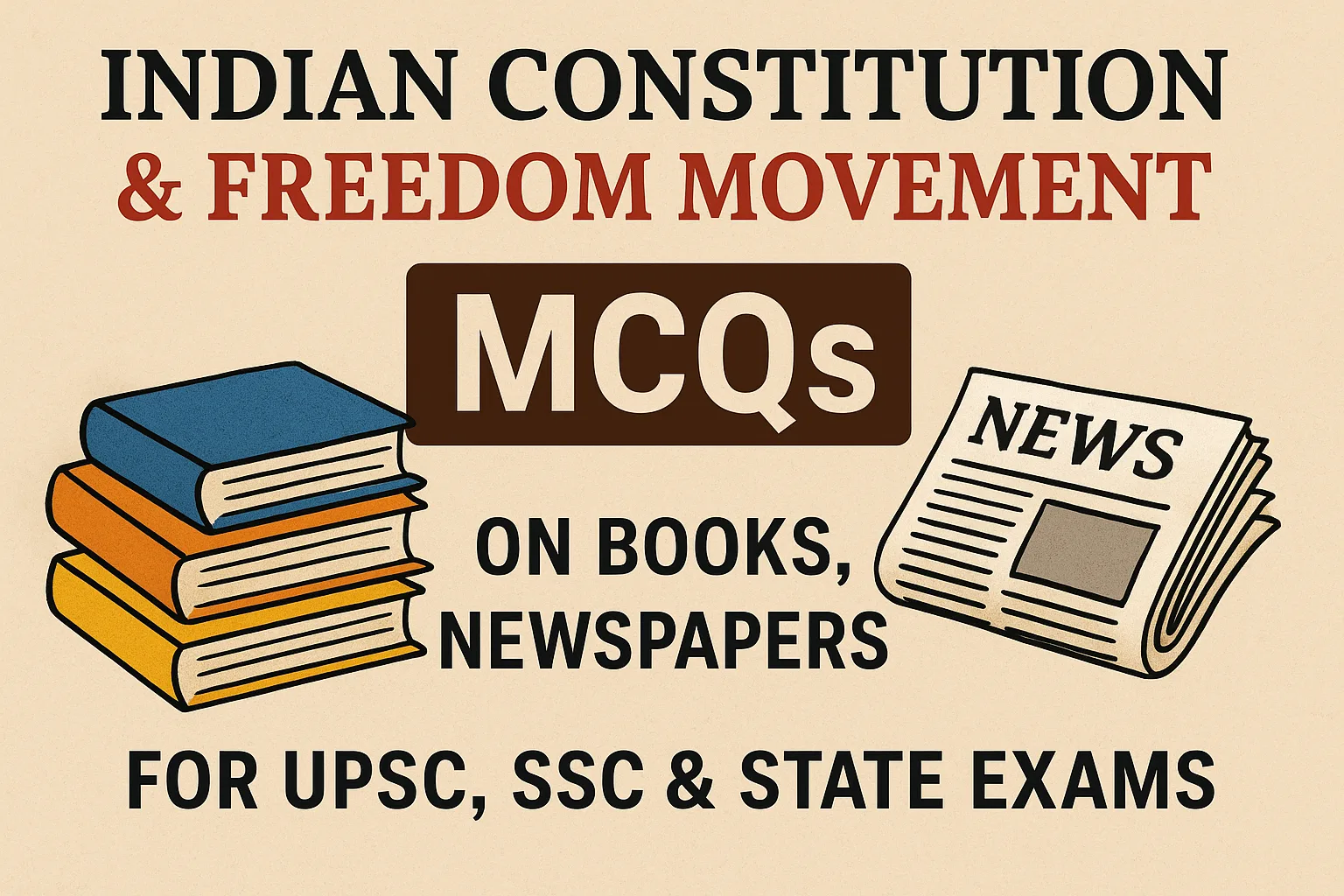
Writing used to be a strong method of fighting British rule, that is, before India won its freedom. Books, newspapers, and magazines helped wake people up, spread ideas and gather them together. Great leaders Raja Ram Mohan Roy, Mahatma Gandhi, Bal Gangadhar Tilak, Rabindranath Tagore and B.R. Ambedkar used the power of pen to teach and inspire change. Significant publications such as Kesari, The Hindu, Young India and Bengal Gazette were critical of British rule and voiced support for social change. The following are some MCQs to refresh your memory about the writers, their works and the publications which contributed immensely to India’s freedom struggle.
1. The Doctrine of Territorial Nexus derives its constitutional authority from which Article?
A) Article 12
B) Article 245
C) Article 300
D) Article 368
Answer: B) Article 245
2. The term “Fundamental Law of the Land” is used to describe which of the following?
A) Legislature
B) Judiciary
C) Constitution
D) Directive Principles
Answer: C) Constitution
3. Which of the following countries has a written constitution?
A) United Kingdom
B) Saudi Arabia
C) India
D) Israel
Answer: C) India
4. The Unwritten Constitution, where provisions are based on conventions and customs, is found in which of the following countries?
A) India
B) USA
C) UK
D) Canada
Answer: C) UK
5. Which type of constitution requires a special procedure for amendment, making it difficult to change?
A) Flexible Constitution
B) Rigid Constitution
C) Federal Constitution
D) Unitary Constitution
Answer: B) Rigid Constitution
6. The Indian Constitution is considered the longest written constitution in the world. It originally contained how many Articles and Parts?
A) 400 Articles in 20 Parts
B) 395 Articles in 22 Parts
C) 390 Articles in 25 Parts
D) 370 Articles in 21 Parts
Answer: B) 395 Articles in 22 Parts
7. Currently, the Indian Constitution consists of how many Articles, Parts, and Schedules?
A) 448 Articles, 25 Parts, and 12 Schedules
B) 450 Articles, 20 Parts, and 10 Schedules
C) 470 Articles, 28 Parts, and 9 Schedules
D) 395 Articles, 22 Parts, and 8 Schedules
Answer: A) 448 Articles, 25 Parts, and 12 Schedules
8. Who handwrote the original English version of the Indian Constitution?
A) B.N. Rau
B) Prem Behari Narayan Raizada
C) Vasant Krishan Vaidya
D) Nand Lal Bose
Answer: B) Prem Behari Narayan Raizada
9. The artists from Shantiniketan, including Nand Lal Bose and Beohar Rammanohar Sinha, contributed to what aspect of the Indian Constitution?
A) Drafting the Preamble
B) Illustrating and decorating the original manuscript
C) Writing the Objectives Resolution
D) Translating the text into Hindi
Answer: B) Illustrating and decorating the original manuscript
10. Constitution Day in India is observed every year on which date?
A) 15th August
B) 26th January
C) 26th November
D) 14th November
Answer: C) 26th November
11. India is recognized as the world’s largest democracy based on which key principle?
A) Military governance
B) Hereditary monarchy
C) Universal adult franchise and elected government
D) Religious representation
Answer: C) Universal adult franchise and elected government
12. Which of the following is not a device of Direct Democracy?
A) Recall
B) Initiative
C) Referendum
D) Impeachment
Answer: D) Impeachment
13. A Referendum refers to:
A) Citizens proposing new laws
B) A public vote on a government-proposed law or policy
C) The removal of a government official
D) A court judgment on policy
Answer: B) A public vote on a government-proposed law or policy
14. The Recall process in Direct Democracy allows citizens to:
A) Elect new representatives before elections
B) Remove an elected official before the end of their term
C) Rewrite existing constitutional laws
D) Approve new political parties
Answer: B) Remove an elected official before the end of their term
15. Republic Day in India is celebrated on 26th January because:
A) It was the day India became independent
B) It marks the day when the Constitution came into effect
C) It was Gandhi’s birthday
D) It was chosen by the British Parliament
Answer: B) It marks the day when the Constitution came into effect
16. The first Republic Day parade of India was held at which venue?
A) Rajpath
B) India Gate
C) Irwin Stadium (now Major Dhyan Chand Stadium)
D) Red Fort
Answer: C) Irwin Stadium (now Major Dhyan Chand Stadium)
17. Who was the chief guest at India’s first Republic Day parade in 1950?
A) Queen Elizabeth II
B) Lord Mountbatten
C) Sukarno, President of Indonesia
D) Jawaharlal Nehru
Answer: C) Sukarno, President of Indonesia
18. India is often described as a Quasi-Federal state because:
A) It has no division of powers
B) The Centre has more power than the States
C) The States are completely independent
D) There is no single constitution
Answer: B) The Centre has more power than the States
19. K.C. Wheare described the Indian Constitution as:
A) Cooperative Federalism
B) Quasi-Federal
C) Federation with Centralizing Tendency
D) Unitary in Spirit
Answer: B) Quasi-Federal
20. In a Parliamentary System, who holds the real executive power in India?
A) President
B) Speaker of Lok Sabha
C) Prime Minister and Council of Ministers
D) Chief Justice of India
Answer: C) Prime Minister and Council of Ministers
21. The Doctrine of Basic Structure was propounded in which landmark Supreme Court case?
A) Minerva Mills case (1980)
B) Kesavananda Bharati case (1973)
C) Golaknath case (1967)
D) Indira Gandhi vs Raj Narain (1975)
Answer: B) Kesavananda Bharati case (1973)
22. The Doctrine of Separation of Powers divides the government into:
A) Legislative and Executive
B) Executive, Legislative, and Judicial organs
C) Federal and Unitary systems
D) Central and State authorities
Answer: B) Executive, Legislative, and Judicial organs
23. The Doctrine of Severability protects:
A) Parliamentary sovereignty
B) Fundamental Rights of citizens
C) Directive Principles
D) Presidential powers
Answer: B) Fundamental Rights of citizens
24. The Doctrine of Eclipse applies when a law violates Fundamental Rights. Such a law becomes:
A) Automatically repealed
B) Void ab initio
C) Dormant and unenforceable against citizens
D) Applicable only to citizens
Answer: C) Dormant and unenforceable against citizens
25. The Doctrine of Colourable Legislation implies that:
A) The legislature can bypass the Constitution
B) Whatever the legislature cannot do directly, it cannot do indirectly
C) The judiciary can make laws when necessary
D) All laws must be written in color-coded format
Answer: B) Whatever the legislature cannot do directly, it cannot do indirectly
